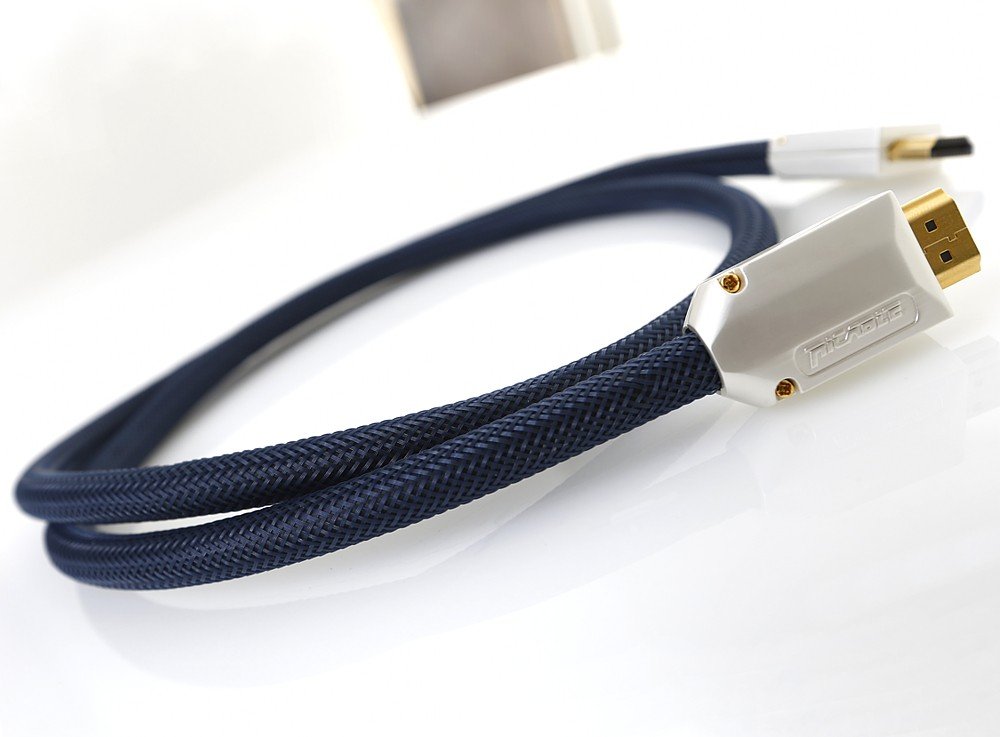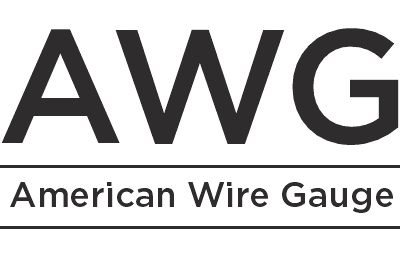To someone reading the acronym AWG, the first thing that will have come to mind is piercing. The reason is quickly stated. Indeed, this system is commonly used to specify the size of body jewelry, especially small jewelry. But this datum is also of fundamental importance for cables HDMI, especially for measuring the cross-sectional area of their conductors. Ricable optimizes the size of the strand of the cable Across at 25 AWG, while that of cables Hi-End e Supreme at 24 AWG. But how to measure the AWG in HDMI cables?
How the acronym came about and how it is used to measure the cross-section of HDMI conductors
The acronym stands for American Wire Gauge, a standardised system for measuring the cross-section of wires. This has been used since 1857, mainly in North America. It is important to consider that this measurement is only used for solid, round conductors, which is why it is often used in audio/video cables, including HDMI cables, because it is a value referring to the single conductor which, depending on the geometry of the cable, forms the final conductor, with braiding of various types. In fact, if we have a cable with a multi-stranded conductor, when we say that the conductor is 24 AWG, this value does not refer to the whole braid, but to each single wire that makes it up. The cross-section of the wire(gauge) is an important factor in determining the maximum current that can flow through it.
As the number measured increases, the wire diameter becomes progressively smaller. This system of measurement stems from the number of drawing operations used to produce a given wire diameter. It is clear that a very thin one would require more passes through the drawbench than a 0-gauge wire, for example. This is why as the value increases, the diameter decreases. The development of standardised measurements rationalised the system. Initially, however, each manufacturer had its own measuring system.

The AWG for a cable is determined by the total cross-sectional area of the conductor, which in turn determines its current carrying capacity and its electrical resistance. Since there are also small cavities between the wires, cables always have a slightly larger total diameter than a solid wire with the same AWG.
The table. Tricks for remembering it by heart and how the AWG works
The various parameter ratios are listed in the table below, which is useful for how to measure AWG for HDMI cables. Generally speaking, the metric conversion table ranges from 0000 (4/0) to 44 AWG and covers all commercially available conductors in the audio/video sector, including HDMI cables. However, there is also a mnemonic rule to facilitate calculations. According to this, when the diameter of a wire doubles, the AGW is reduced by 6 units; when the cross-section of a wire doubles, the AWG decreases by 3 units. Finally, when the AWG value decreases by 10, the cross-section and weight increase by the same amount, while the resistance is reduced by a factor of 10.
Cables are specified with three numbers: the overall AWG size, the number of wires making up the cable and the AWG size of the wire. The number of wires and the AWG of an individual wire are separated by a slash. For example, a 22 AWG 7/30 cable is a 22 AWG cable consisting of seven wires with an AWG size of 30. These are the values that make us understand how to measure the AWG in HDMI cables.
Colloquially the AWG system is referred to as gauge and zeros in large wire sizes are referred to as aught. Wires of size 1 AWG are referred to as one gauge; similarly, smaller diameters are pronounced by their positive integer. For larger wire sizes (#0 and up), the word gauge becomes one aught, two aught and so on, depending on how many zeros there are in the AWG code. In other cases the word gauge is replaced by the word number, which appears before the size.
The AWG cable conversion table. How to measure HDMI cables (and more)
| AWG | Diameter mm | Section (Area) mm² |
| 0000 (4/0) | 11,684 | 107,22 |
| 000 (3/0) | 10,405 | 85,01 |
| 00 (2/0) | 9,266 | 67,43 |
| 0 (1/0) | 8,252 | 53,49 |
| 1 | 7,348 | 42,41 |
| 2 | 6,544 | 33,62 |
| 3 | 5,827 | 26,67 |
| 4 | 5,189 | 21,15 |
| 5 | 4,620 | 16,77 |
| 6 | 4,115 | 13,30 |
| 7 | 3,655 | 10,55 |
| 8 | 3,264 | 8,37 |
| 9 | 2,906 | 6,63 |
| 10 | 2,588 | 5,26 |
| 11 | 2,305 | 4,17 |
| 12 | 2,052 | 3,31 |
| 13 | 1,828 | 2,63 |
| 14 | 1,623 | 2,08 |
| 15 | 1,450 | 1,65 |
| 16 | 1,291 | 1,31 |
| 17 | 1,149 | 1,04 |
| 18 | 1,024 | 0,823 |
| 19 | 0,912 | 0,653 |
| 20 | 0,812 | 0,519 |
| 21 | 0,723 | 0,411 |
| 22 | 0,644 | 0,324 |
| 23 | 0,573 | 0,259 |
| 24 | 0,511 | 0,205 |
| 25 | 0,455 | 0,162 |
| 26 | 0,405 | 0,128 |
| 27 | 0,361 | 0,102 |
| 28 | 0,321 | 0,0806 |
| 29 | 0,286 | 0,0649 |
| 30 | 0,255 | 0,0507 |
| 31 | 0,227 | 0,0401 |
| 32 | 0,202 | 0,0324 |
| 33 | 0,180 | 0,0255 |
| 34 | 0,160 | 0,0201 |
| 35 | 0,143 | 0,0159 |
| 36 | 0,127 | 0,0127 |
| 37 | 0,113 | 0,0103 |
| 38 | 0,101 | 0,0081 |
| 39 | 0,090 | 0,0062 |
| 40 | 0,080 | 0,0049 |
| 41 | 0,071 | 0,0039 |
| 42 | 0,064 | 0,0032 |
| 43 | 0,056 | 0,0025 |
| 44 | 0,051 | 0,0020 |


